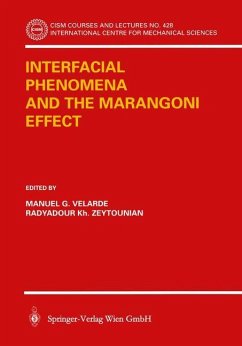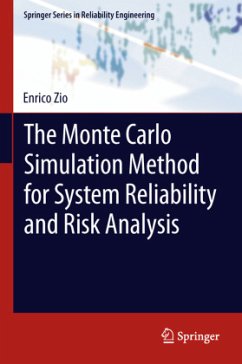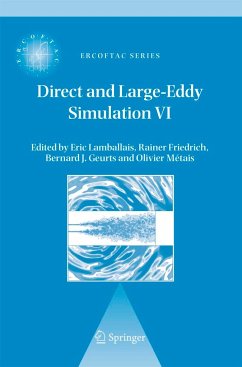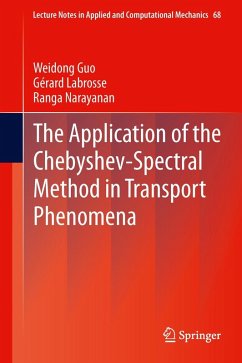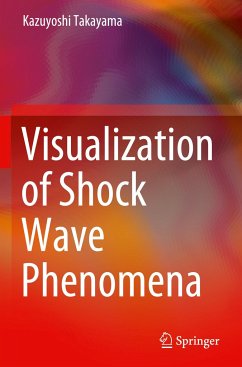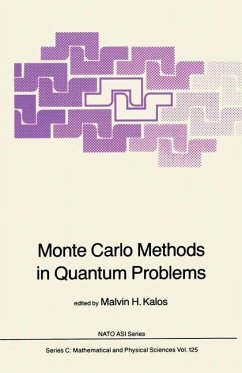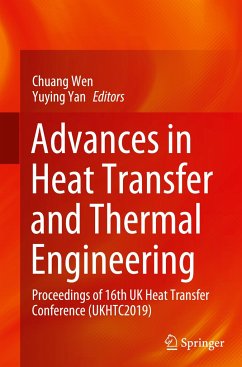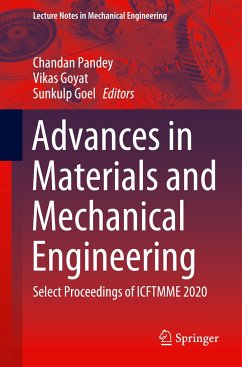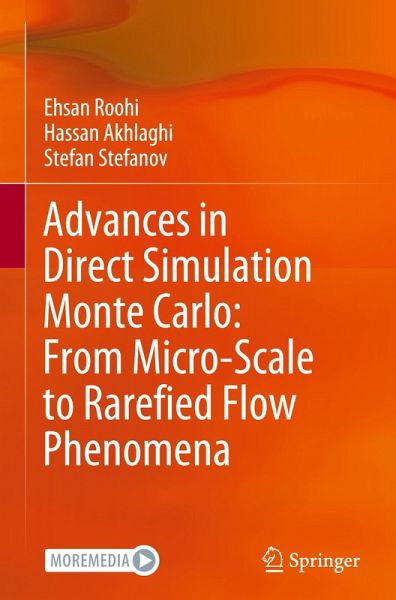
Advances in Direct Simulation Monte Carlo: From Micro-Scale to Rarefied Flow Phenomena

PAYBACK Punkte
42 °P sammeln!
This book provides a comprehensive and in-depth presentation of recent advancements in the Direct Simulation Monte Carlo (DSMC) method, focusing on modern collision algorithms that maintain accuracy even with low particle-per-cell. Drawing from theoretical insights and computational innovations, it bridges fundamental kinetic theory with practical simulation techniques for rarefied gas flows.Structured across ten chapters, the book begins with a discussion of micro- and nanoscale fluid flows, where non-equilibrium effects and rarefaction become dominant. It explores key phenomena in MEMS/NEMS ...
This book provides a comprehensive and in-depth presentation of recent advancements in the Direct Simulation Monte Carlo (DSMC) method, focusing on modern collision algorithms that maintain accuracy even with low particle-per-cell. Drawing from theoretical insights and computational innovations, it bridges fundamental kinetic theory with practical simulation techniques for rarefied gas flows.
Structured across ten chapters, the book begins with a discussion of micro- and nanoscale fluid flows, where non-equilibrium effects and rarefaction become dominant. It explores key phenomena in MEMS/NEMS devices, such as velocity slip, temperature jump, Knudsen minimum, and thermal polarization essential for understanding transport in confined geometries.
A strong emphasis is placed on advanced DSMC collision schemes, including the BT-family of algorithms (e.g., SBT, ISBT, GBT, SSBT, and SGBT), as well as emerging hybrid approaches such as DSMC-Fokker-Planck and Low-Variance DSMC. Applications span from pressure-driven microchannel flows, thermally induced rarefied flows, and Couette/cavity configurations, to supersonic wedge flows and nonlinear instability phenomena like Rayleigh Bénard convection in rarefied gases.
Special attention is given to semi-analytical aerodynamic models in free-molecular regimes, making the book particularly valuable for those working in aerospace applications at high altitudes or in low-density environments.
With contributions from leading experts, this expanded volume serves as both a reference and a teaching guide for researchers and students in rarefied gas dynamics, microfluidics, and high-fidelity particle-based simulation methods.
Structured across ten chapters, the book begins with a discussion of micro- and nanoscale fluid flows, where non-equilibrium effects and rarefaction become dominant. It explores key phenomena in MEMS/NEMS devices, such as velocity slip, temperature jump, Knudsen minimum, and thermal polarization essential for understanding transport in confined geometries.
A strong emphasis is placed on advanced DSMC collision schemes, including the BT-family of algorithms (e.g., SBT, ISBT, GBT, SSBT, and SGBT), as well as emerging hybrid approaches such as DSMC-Fokker-Planck and Low-Variance DSMC. Applications span from pressure-driven microchannel flows, thermally induced rarefied flows, and Couette/cavity configurations, to supersonic wedge flows and nonlinear instability phenomena like Rayleigh Bénard convection in rarefied gases.
Special attention is given to semi-analytical aerodynamic models in free-molecular regimes, making the book particularly valuable for those working in aerospace applications at high altitudes or in low-density environments.
With contributions from leading experts, this expanded volume serves as both a reference and a teaching guide for researchers and students in rarefied gas dynamics, microfluidics, and high-fidelity particle-based simulation methods.





